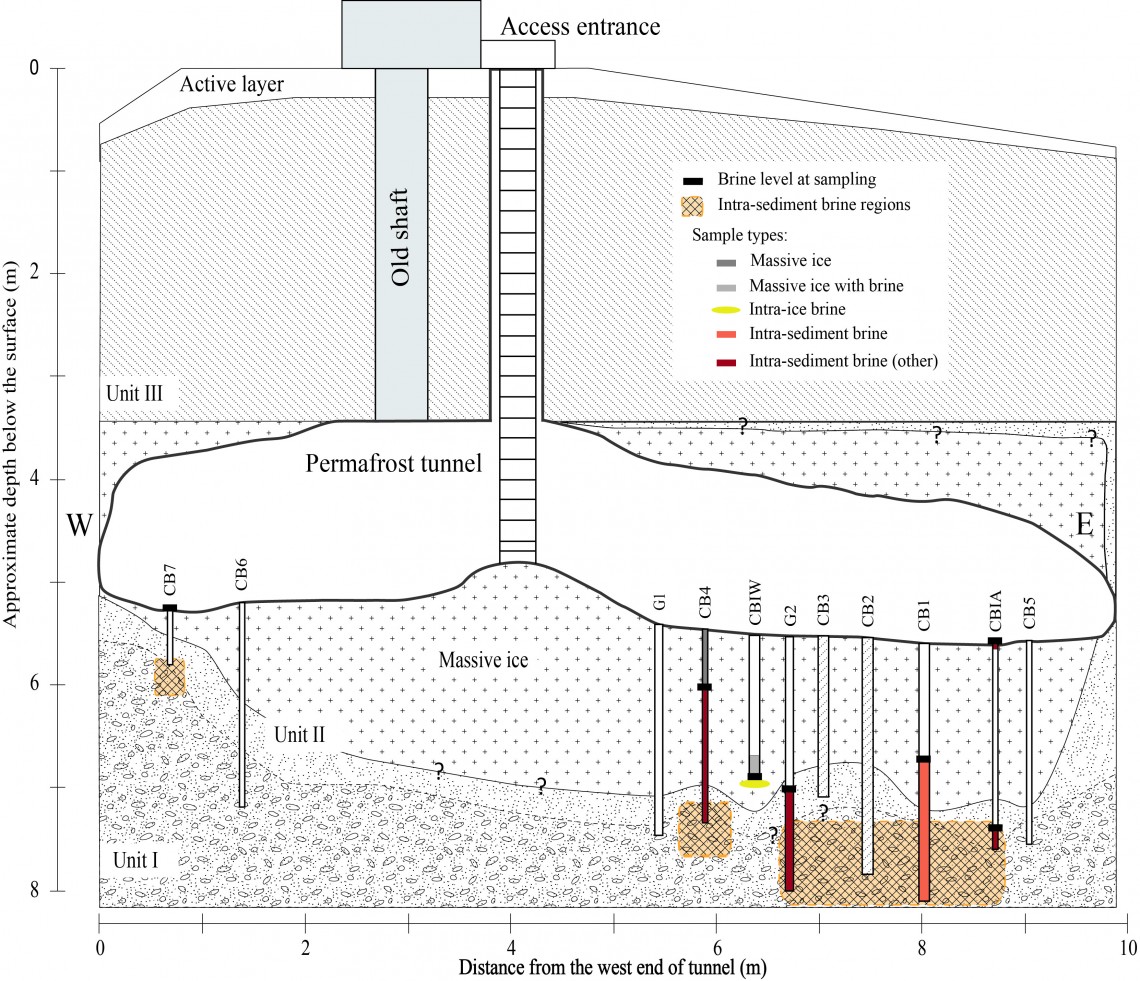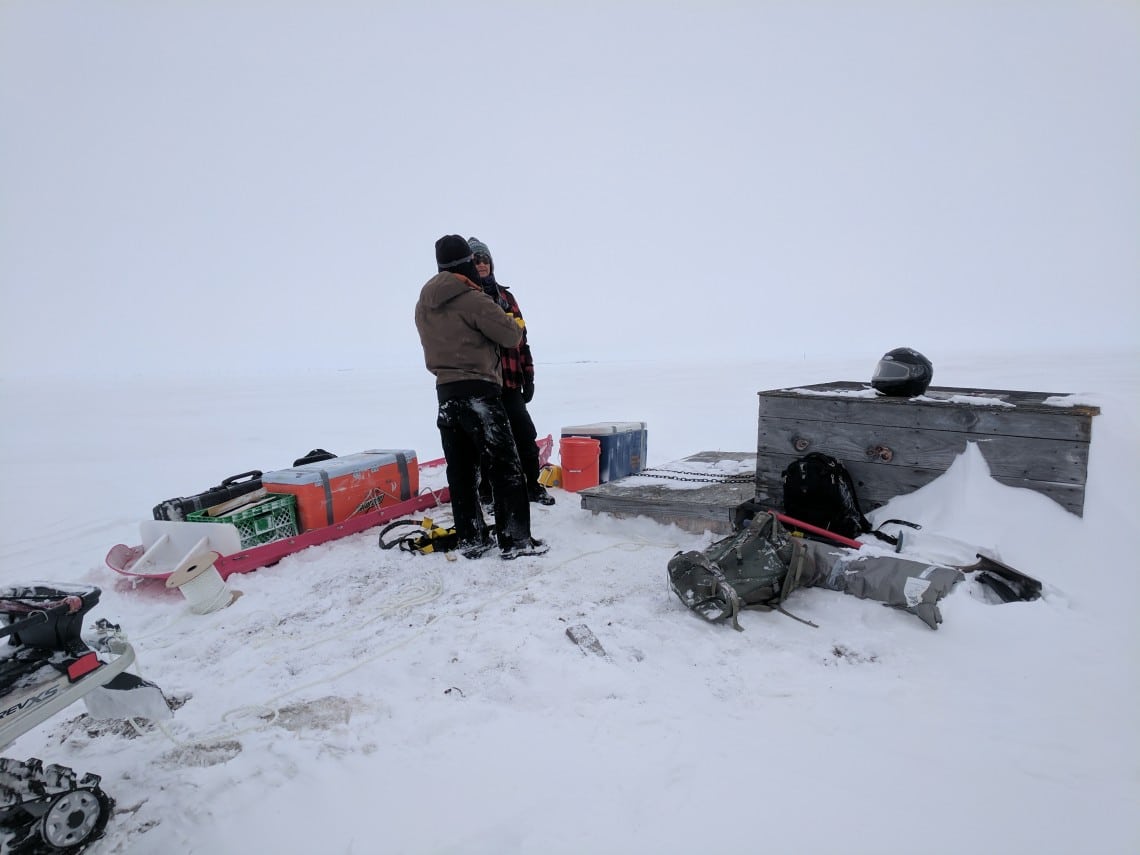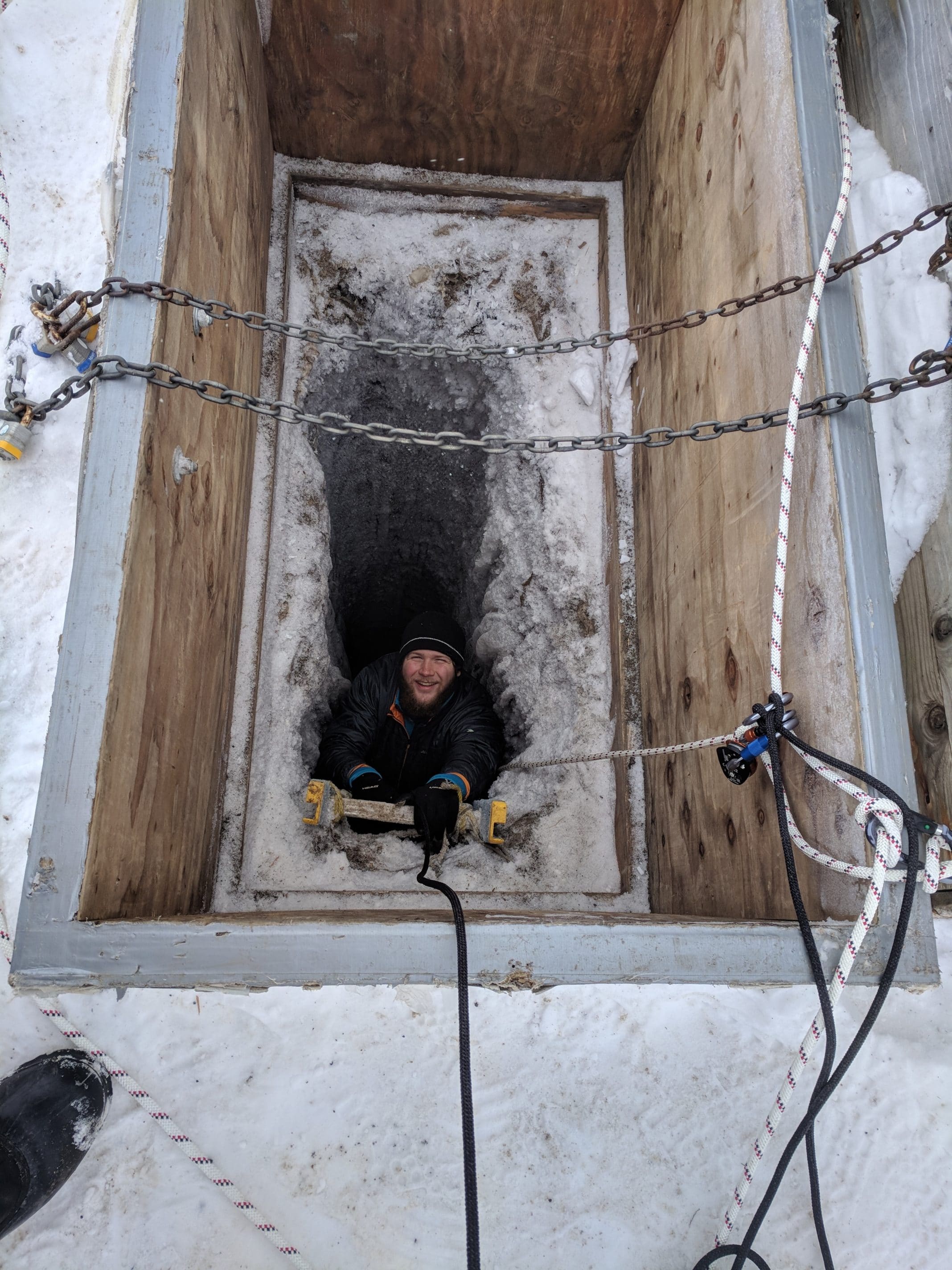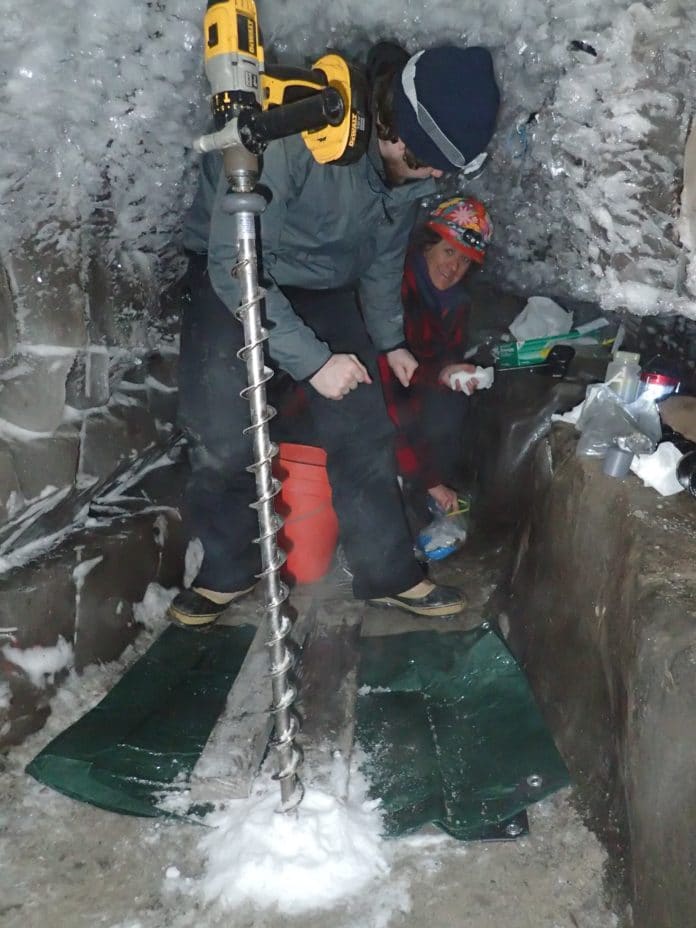On Earth, scientists are concentrating the most extreme environments to figure out how life may exist under completely various settings, as on different planets. A University of Washington group has been concentrating the microbes found in “cryopegs,” trapped layers of sediments with water so salty that it stays fluid at underneath freezing temperatures, which might be like environments on Mars or other planetary bodies more distant from the sun.
When performing DNA sequencing, scientists found that brine samples from an Alaskan cryopeg isolated for tens of thousands of years contain thriving bacterial communities. What’s more, the samples are most alike floating sea ice and in saltwater that flows from glaciers, but display some unique patterns.
Lead author Zachary Cooper, a UW doctoral student in oceanography said, “We study really old seawater trapped inside of permafrost for up to 50,000 years, to see how those bacterial communities have evolved over time.”

Cryopeg is a layer of unfrozen ground that is perennially cryotic (forming part of the permafrost) in which freezing is prevented by freezing-point depression due to the dissolved-solids content of the pore water. Cryopegs remain liquid at the in situ temperature of −9°C to −11°C and make up the only habitat on the Earth that is characterized by permanent subzero temperatures, high salinity, and the absence of external influence during geological time. Cryopegs are mineralized headwater lenses below the Arctic massive ground ice bodies.
Jody Deming, a UW professor of oceanography who studies microbial life in the Arctic Ocean said, “The extreme conditions here are not just the below-zero temperatures, but also the very high salt concentrations. One hundred and forty parts per thousand — 14% — is a lot of salt. In canned goods that would stop microbes from doing anything. So there can be a preconceived notion that very high salt should not enable active life.”

To get to the subsurface fluids, specialists move around 12 feet down a ladder and after that move cautiously along a passage inside the ice. The opening is only a single person wide and isn’t sufficiently high to remain in, so analysts must squat and cooperate to drill during the 4-to 8-hour shifts.
For Deming, it was an exhilarating experience because of the possibility for discovery.

Cooper said, “We’re just discovering that there’s a very robust microbial community, coevolving with viruses, in these ancient buried brines. We were quite startled at how dense the bacterial communities are.”
Deming said, “The dominant bacterium is Marinobacter. The name alone tells us that it came from the ocean – even though it has been in the dark, buried in frozen permafrost for a very long time, it originally came from the marine environment.”

Mars harbored an ocean of water in the past, and our solar system contains at least a half-dozen oceans on other planets and icy moons. Titan, the moon of Saturn that NASA will explore, is rich in various forms of ice. Studying life on Earth in frozen settings that may have similarities can prepare explorers for what kind of life to expect, and how to detect it.
The research was funded by the Gordon and Betty Moore Foundation to learn how bacteria and viruses coevolve in different marine environments. Other collaborators at UW are Josephine Rapp, a postdoctoral researcher in Oceanography, Max Showalter, a doctoral student in Oceanography, and Shelly Carpenter, a research scientist in Oceanography.

Scientists presented their results at the recent AbSciCon meeting in Bellevue, Washington.
